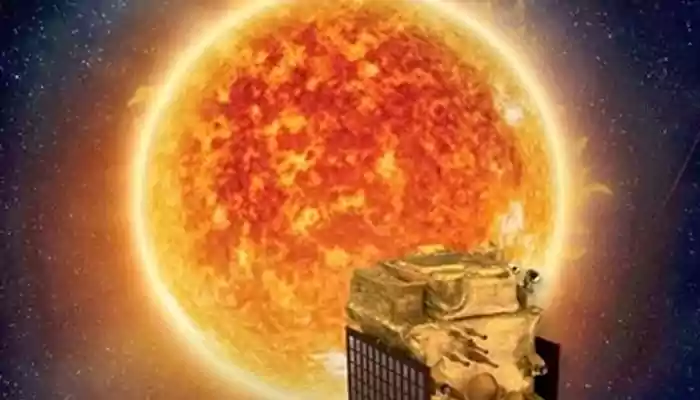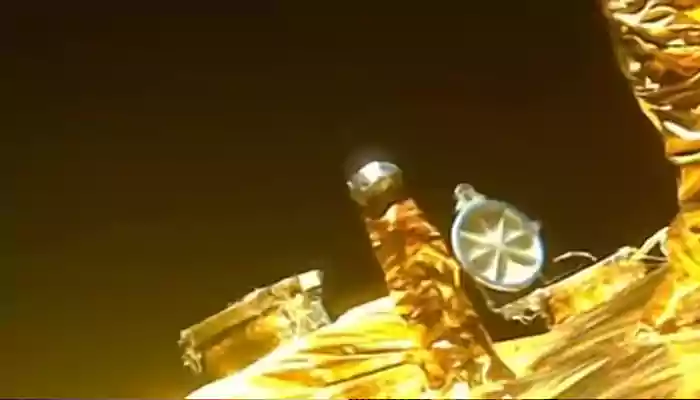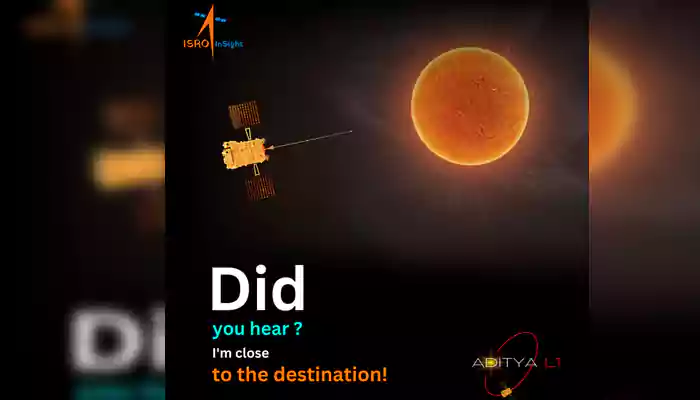
India's first solar mission, Aditya L1, is going to reach the destination Lagrange point 1 (L1) of the Sun-Earth system tomorrow.
Aditya-L1 spacecraft was launched on September 2, 2023 from the Satish Dhawan Space Centre (SDSC) in Sriharikota, Andhra Pradesh. This mission will analyse the solar atmosphere from a halo orbit around first Sun-earth Lagrangian point (L1), situated approximately 1.5 million km from Earth.
According to ISRO chief Mr. S Somanath “Lagrange point is a region where gravity between Earth and Sun will neutralise. Absolute neutralisation is not possible because there are other bodies like the Moon, Mars, Venus.”
Meanwhile, this Lagrange point 1 will provide Aditya L1 spacecraft of ISRO an uninterrupted vision of the Sun. This will allow the spacecraft to analyse the Sun's corona and Chromosphere.

“Aditya L1 is almost there now. Aditya L1 will reach Lagrange point on January 6 at 4 pm. We will have a very controlled burn of the engine of Aditya L1 so that it enters an orbit called the halo orbit,” ISRO chief said at an event in Indian Institute of Technology, Bombay.
He further added: “All six payloads have been tested and working beautifully, all are giving very good data.”
As soon as the spacecraft reaches Lagrange Point 1 (L1) successfully, it will spend the upcoming 5 years in orbit around L1. From there, the spacecraft will be collecting crucial data about solar atmosphere.
Due to its unique position, Sun's outer layers will be viewed properly, providing valuable information about coronal heating, space weather dynamics, Coronal Mass Ejection as well as the generation of particles in the interplanetary medium.
Regarding the operation, ISRO chief said: “After the insertion the satellite will be destined to look at the Sun forever as long as its electronics inside are healthy and ready to transmit data. We hope to find out a lot of correlation between the solar corona and mass ejection and impact on space weather we are facing everyday.”
Aditya L1 carried seven payloads, designed to examine the chromosphere, photosphere and corona of the sun. Broadly, it will help significantly to understand the solar phenomena like solar wind and their impact on different space-related activities.

Two months ago, ISRO shared that the spectrometer of Aditya-L1 has observed the impulsive phase of solar flares, during its first observation period.
According to ISRO: “A solar flare is a sudden brightening of the solar atmosphere. Flares produce enhanced emission in all wavelengths across the electromagnetic spectrum - radio, optical, UV, soft X-rays, hard X-rays and gamma-rays.”
“The instrument is set to monitor the sun's high-energy X-ray activity with fast timing and high-resolution spectra,” ISRO wrote on its X timeline.
On 1st January, 2024, ISRO launched its first X-Ray Polarimeter Satellite, XPoSat, from the Satish Dhawan Space Centre at Sriharikota in Andhra Pradesh.
This spacecraft will study celestial objects like black holes, it's mechanism and geometry.
In a astronomical exhibition of prowess, India reached to new heights in 2023 with the successful landing of Chandrayaan-3 on the Moon and the launching of Aditya-L1. ISRO is preparing to launch multiple space exploration mission in this year. Now, India is aiming for the Gaganyaan Mission, to establish ‘Bharatiya Antariksha Station’ by 2035, followed by sending Indian astronaut to the Moon by 2040.